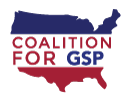Based on an analysis of new U.S. Census Bureau data released last week, American companies paid at least $1.05 billion in extra tariffs on $18.7 billion in imports due to GSP expiration last year. Here are some of the highlights (or really, lowlights):
- Top 5 states by tariffs paid due to expiration: California ($287 million), Florida ($98 million), New York ($80 million), Texas ($80 million), Georgia ($61 million)
- Top 5 states by highest average tariff paid due to expiration: Colorado (12.1%), Maine (11.0%), Wisconsin (9.3%), Montana (9.1%), Utah (9.0%)
- Top 5 source countries by value of GSP imports: Indonesia ($3.9 billion), Thailand ($3.3 billion), Cambodia ($2.7 billion), Brazil ($2.5 billion), Philippines ($1.9 billion)
- Top 5 source countries by value of (eventual) tariff savings: Cambodia ($268 million), Indonesia ($218 million), Thailand ($139 million), Philippines ($121 million), Brazil ($94 million)
Import growth in 2021 was massive. Total U.S. goods imports grew by 21%, while those from GSP countries grew by 35%. Yet “competitive need limitations” (CNLs), which lead to GSP loss for specific products, only grew by 2.6%. As a result, $1.8 billion of the currently eligible imports exceeded the 2021 CNL and another $1.5 billion likely will exceed the 2022 cap based on import levels and trends, putting a huge share of future GSP benefits at risk:
- Top 5 states by share of benefits at risk for exceeding the 2021 CNL: Mississippi (42%), Louisiana (26%), Florida (20%), New York (15%), Virginia (13%)
- Top 5 states by share of benefits likely at risk from the 2022 CNL: Maine (37%), Colorado (27%), Iowa (27%), Hawaii (19%), Michigan (15%)
Representatives Stephanie Murphy (D-FL) and Jackie Walorski (R-IN) introduced the bipartisan CNL Update Act (H.R.6171), which would amend the CNLs to grow more in line with historical trends. Not only would the CNL Update Act help preserve GSP for much of that “at risk” trade, it would help restore GSP for some of the $10 billion (!!!) in imports that lost GSP in the past due to product reviews:
- Top 5 states by potential GSP savings increase for products that “should” be restored by H.R.6171: Alaska (84%), South Dakota (72%), Michigan (41%), Maryland (38%), Mississippi (42%)
- Top 5 states by potential GSP savings increase for products that “may” be restored by H.R.6171: South Dakota (4,565%), Wyoming (218%), Maryland (213%), New York (196%), Minnesota (166%)
While the CNL Update Act has a chance to “preserve and restore,” there remains considerable down-side risk. The GSP renewal language in the House’s America COMPETES Act not only maintains the current CNL thresholds, but creates a high likelihood of full or partial termination for key GSP supplier countries, particularly Brazil, Cambodia, Myanmar, Philippines, and Thailand. Loss of GSP due to current CNL rules, combined with loss for those countries, would decimate the program:
- States where at least 90% of current GSP benefits are at risk: Wisconsin (-97%), West Virginia (-96%), Montana (-92%), Utah (-91%)
- States where at least 80% of current GSP benefits are at risk: Colorado (-88%), Connecticut (-86%), Arkansas (-85%), Hawaii (-84%), Wyoming (-83%), Maine (-83%), Alaska (-82%), Kansas (-82%), Mississippi (-82%), Texas (-81%), Indiana (-81%)
- States where at least 70% of current GSP benefits are at risk: Nebraska (-79%), Georgia (-79%), North Carolina (-79%), Michigan (-79%), Washington (-78%), Rhode Island (-78%), Nevada (-78%), Illinois (-77%), Alabama (-76%), New Mexico (-76%), California (-76%), Minnesota (-75%), Tennessee (-75%), Virginia (-74%), Massachusetts (-74%), Oklahoma (-74%), Kentucky (-73%), South Dakota (-72%), Florida (-72%), Oregon (-71%)
This last set of stats shows that GSP “renewal” can’t be the only priority. It must be renewed in a way that doesn’t decimate the program in the next 2-3 years. After all, it’s impossible to “promote development through trade” with a program that covers no trade.
